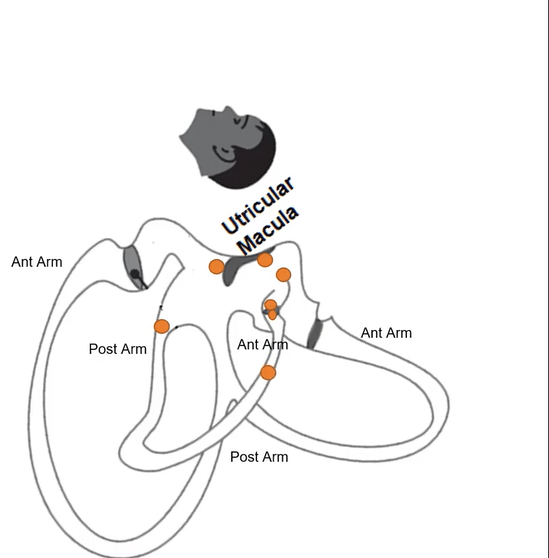The PT's Diagnostic Power: Why Benign Paroxysmal Positional Vertigo (BPPV) is Our Diagnosis to Make
As a physical therapist specializing in vestibular and balance disorders, I often discuss our professional scope: "Do physical therapists diagnose disease?" It's a question that cuts right to the heart of our unique expertise and how we fit into the broader healthcare landscape.
Let's be clear from the outset: Physical therapists don't diagnose systemic diseases. That responsibility lies with physicians. A medical doctor identifies and diagnoses underlying pathologies like diabetes, vascular disease, migraines, or vestibular neuritis. These are complex medical conditions; their diagnosis is essential for comprehensive patient management.
Our Superpower: Diagnosing Dysfunction and Pain (and Specific Conditions Like BPPV)
So, what do we diagnose if we don't diagnose systemic disease? Our unique expertise, our distinctive contribution to healthcare, is the diagnosis of dysfunction and pain. As movement system experts, we are crucial in identifying and treating specific conditions like BPPV. When a patient arrives at my clinic complaining of dizziness, I see not just a symptom, but an individual whose life is significantly impacted by a disruption in their balance system, leading to specific impairments and limitations.
This brings us directly to Benign Paroxysmal Positional Vertigo (BPPV) – a prime example of a condition that falls squarely within our diagnostic and treatment expertise. While we don't diagnose systemic diseases, we are uniquely qualified to diagnose and treat specific mechanical disorders like BPPV, a malfunction within the inner ear.
Is BPPV a ‘disease’? This is where the nuance is critical. While certain diseases (like diabetes affecting microvasculature, or even a past episode of vestibular neuritis) might predispose someone to developing BPPV, BPPV itself is a mechanical disorder, not a systemic disease. It's a specific, identifiable malfunction within the inner ear.
The PT Diagnoses BPPV: Here's How and Why
As vestibular physical therapists, we are uniquely qualified to diagnose BPPV. When a patient presents with sudden, brief episodes of spinning dizziness triggered by head movements, we immediately consider BPPV. Our diagnostic process is not just precise, but also objective, ensuring that our conclusions are based on solid evidence and professional judgment:
Specialized Testing: We perform specific positional tests, like the Dix-Hallpike or Roll tests. During these tests, we carefully observe the patient's eyes for characteristic nystagmus (involuntary eye movements) and correlate it with their reported vertigo.
Identifying the "Root Cause" of the Vertigo: Our assessment allows us to pinpoint precisely which semicircular canal (e.g., posterior, horizontal, anterior) is involved and whether the displaced calcium carbonate crystals (otoconia or "ear rocks") are freely floating within the canal (canalithiasis) or stuck to the cupula (cupulolithiasis). For example, if we diagnose Posterior Semicircular Canal BPPV - Canalithiasis, our treatment is the Parnes Maneuver.
A Functional Diagnosis: This precise identification of the mechanical dysfunction is our diagnosis. When we document H81.11 (Benign paroxysmal vertigo, right ear), H81.12 (Benign paroxysmal vertigo, left ear), or H81.13 (Benign paroxysmal vertigo, bilateral), we are coding the specific BPPV diagnosis we have made. These codes directly reflect the condition necessitating our highly specialized, mechanical interventions.
The Collaborative Continuum of Care
It's vital to emphasize that our ability to diagnose BPPV and other vestibular dysfunctions doesn't negate the physician's role. Instead, it creates a powerful collaborative continuum of care. The physician's diagnosis of underlying diseases (like migraine or diabetes) provides critical context and ensures no serious medical conditions are missed. Our diagnosis of BPPV and other specific dysfunctions allows for immediate, effective, and targeted physical therapy interventions, getting patients better faster. This collaborative approach is essential for comprehensive patient care.
When we use an ICD-10 code like H81.11 for BPPV, we document, bill, and communicate the specific condition we treat to the broader healthcare system. This transparent communication confirms that the patient's mechanical vestibular disorder requires our unique expertise and is crucial to the treatment process.
Why This Matters for You (and Your Patients)
This clear understanding of our diagnostic scope is crucial for practitioners and patients. It means that while a physician identifies medical conditions that might predispose to dizziness, a physical therapist precisely identifies why and how that dizziness occurs from a mechanical and functional standpoint. We then provide the specific, evidence-based treatments to resolve the problem and restore function. We don't fly by the seat of our pants; we use our diagnostic skills to guide our patients to a life free from vertigo systematically.
So, the next time the topic of dizziness arises, remember: physicians diagnose systemic disease, but physical therapists diagnose the dysfunction, pain, and specific mechanical conditions like BPPV, providing the essential, specialized care that helps patients regain their balance, safety, and confidence.







Excellent article!
I completely agree—staying within our scope of practice is essential for protecting ourselves legally and maintaining trust with patients and referring providers. That said, I also believe in fully utilizing the breadth of our scope: a wide base of support within our scope.
We should confidently use every appropriate tool and test at our disposal to identify impairments and support our patients effectively. Clear, consistent communication with referring providers is equally critical to ensure we’re providing safe, collaborative care with the collective goal of improving the patient’s quality of life.
When I have a patient with a referral that has the dx of R42 - dizziness and giddiness and find BPPV. I simply call the referring provider and ask can they send a rx with an updated DX for the type of BPPV that is identified in evaluation ( H81.__) Most insurance companies will not reimburse for CRM without this dx code attached. Works well for our clinic in a small community with good physician relations.